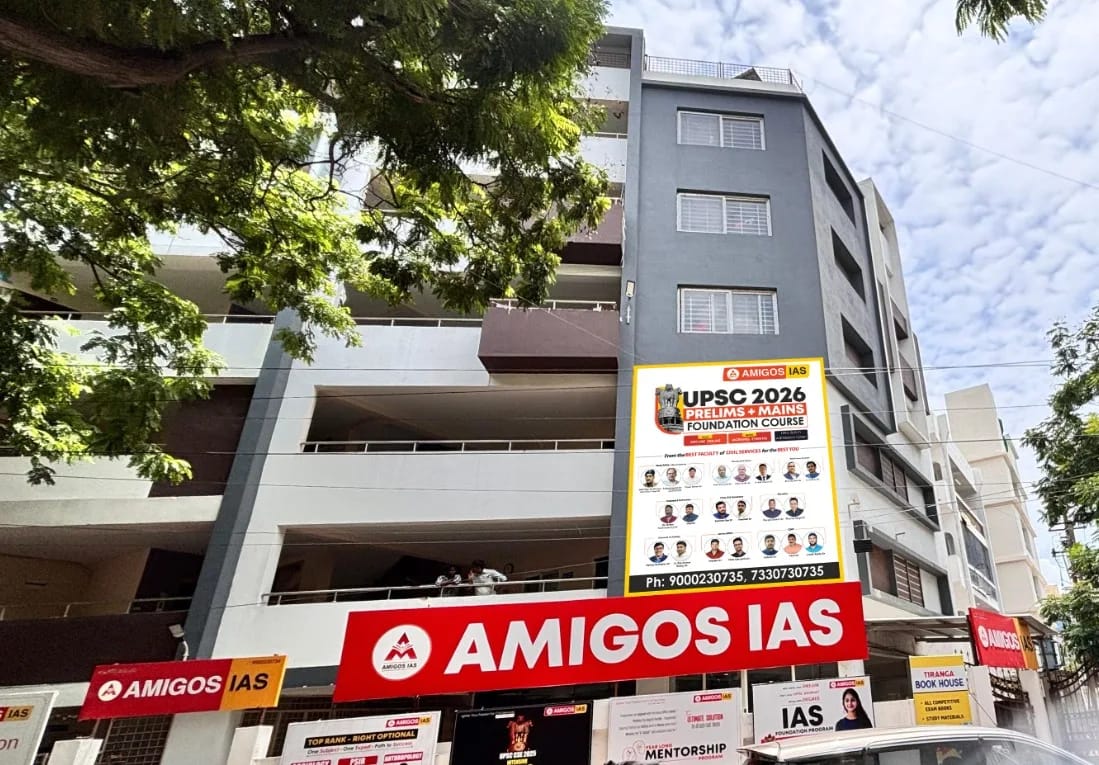A Student Centric Institute for Aspiring Civil Servants
Join thousands of aspirants who trust Amigos IAS for comprehensive civil services examination coaching, expert mentorship, and proven strategies to crack India's most prestigious examination.

Join thousands of aspirants who trust Amigos IAS for comprehensive civil services examination coaching, expert mentorship, and proven strategies to crack India's most prestigious examination.

Get comprehensive coverage of national and international events crucial for your UPSC preparation
Loading current affairs...

Amigos IAS has been at the forefront of UPSC coaching, providing the best in class room teaching and mentorship to thousands of aspirants. Our unique, progressive teaching methodology combines traditional wisdom with modern technology.
We believe in personalized attention, comprehensive study materials, and a supportive learning environment that empowers every student to achieve their dreams of serving the nation.
Learn from IAS officers and subject experts
Updated content aligned with latest syllabus
Regular mock tests and performance analysis
One-on-one guidance from experienced mentors
Choose from our carefully designed programs tailored for every stage of your UPSC journey
For Beginners
for college students
Your final step to IAS
Hear from our successful students who cracked UPSC with Amigos IAS
"Amigos IAS provided me with the perfect guidance to excel in my interview, through IGP. The faculty's dedication and personalized attention helped me secure AIR 03."
"The test series and answer writing practice at Amigos IAS were instrumental in my success. The detailed feedback helped me improve continuously throughout my preparation."
"From foundation to interview, Amigos IAS was with me every step of the way. The comprehensive current affairs coverage and sociology optional subject guidance were exceptional."
Have questions about our courses or need guidance? Our team is here to help you make the right choice for your UPSC preparation.
Amigos IAS Academy
Opp. Sub Registrar Office, Ashok Nagar, Hyderabad.